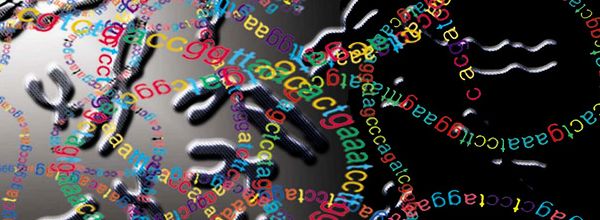Making agar plates, whether they contain LB, M9, blood agar, or any other growth media, is a simple procedure. But there are a few finer points that, if you get them wrong, will kill your experiment, make a mess, or just cause you inconvenience.
So let’s put on the record exactly how to make the perfect agar plate for those of you who are new to the world of working with bacteria.
Follow these steps, and you’ll be on your way to making agar plates that are perfect—with no lumps, bubbles, or excess moisture—every time.
8 Tips for Pouring Perfect Agar Plates Every Time
1. Use a Recipe
Make up the medium according to the recipe, then add the desired amount of agar powder (normally about 1% w/v) and stir. If you autoclave without stirring, with the agarose still floating on top of the liquid, you get an agarose cake in the medium. Interesting, but useless.
When making up the agar, only use 3/4 of the volume of the bottle. This allows space for bubbles to rise while the agar is melting in the microwave (and saves you cleaning up overflowing agar from the microwave!).
2. Autoclave
Autoclave your medium for 25 minutes. After autoclaving, you can, of course, store the medium-agar mix in a toughened glass bottle then melt it in a microwave or water bath when needed. Make sure you use toughened glass bottles, or disaster can strike.
Remember to use heat-resistant gloves when handling hot medium straight out of the autoclave.
3. Cool It!
Cool the medium-agar mix to 55°C. For routinely consistent results, cool for a couple of hours in a 55°C water bath. Agar starts to solidify at about 50°C.
Using the water bath when making agar plates means you can consistently cool the mixture to just above the solidification temperature.
Before I used a water bath, I used to just cool it in the air, but would inevitably forget about it and come back to find solidification had already started—lumpy plates are no good for spreading!
4. Supplement It
You can now add any antibiotics or supplements, and be confident that the agar is at a suitable temperature because you have cooled it in the water bath.
Top Tip: Check out Bitesize Bio’s Awesome Antibiotics Reference Guide, which provides an easy reference to help you pick and use the right antibiotic. It covers their mechanisms, range, and working concentrations.
5. Pour the Plates
When using 100-mm diameter dishes, create each plate using about 30 mL of the agar-medium mix. The less agar-medium mix in each plate, the more easily they will dry out.
30 mL is a good amount for long-term storage, 10–20 mL is fine if you are going to use the plates relatively soon.
For consistency when making agar plates, I’d recommend using a serological pipette. Suck up 2–3 mL more than you need to minimize blowing bubbles into the plate.
When pouring, be careful not to contaminate the media and plates. Wear clean gloves (such as nitrile gloves) when handling the dishes, and remember your sterile technique. Use an open flame (e.g., a Bunsen burner) to help keep the area sterile when preparing plates.
6. Let It Set
If there are any bubbles in the plates, briefly pass the flame over to pop them. This is a classic error: trying to move the plates before they’ve set and cooled completely is just asking for trouble. Just leave them alone (and maybe admire your perfect agar plates while you wait)!
7. Get Dry
Dry the plates in the laminar flow hood with the lid slightly off for 30 minutes (or in a 37°C incubator for 2–3 hours or at room temperature for 2–3 days). Drying the plate is very important for storing the plates and growing colonies on them.
If you don’t dry the plates, the moisture will evaporate and condense on the lid during storage or incubation, resulting in horrible wet plates. At worst, the moisture can affect the plating of your cells.
Use a timer to remind you when the 30 minutes are up as—in my experience—it is very easy to forget about your plates and come back to find your plates have turned into agar crisps/chips. Tasty.
8. Use It or Store It
Once you’ve poured your perfect agar plates, you can use them immediately or seal them for later use. You can use Parafilm, or stack them and store them upside down in the plastic bag or plastic sleeve that the plates came in for easy storage.
Store the plates in the refrigerator or cold room at 4°C. Guidelines suggest using agar plates within approximately 2 to 4 weeks.
Depending on the additives you have included, the shelf life of the prepared plates might be shorter—make sure you check this before you start so you don’t end up wasting your time (and resources) making too many plates or end up with contamination on your plates!
A quick way to label your plates is to have a color code for each antibiotic and medium type you tend to use (e.g., red for ampicillin, black for kanamycin, green for LB, blue for M9).
Stack the plates and use the appropriately colored lab marker to draw a line down the whole stack. Make sure you keep the color code on hand, though.
FAQs
Q: How can one troubleshoot common issues that may arise when the agar plates do not set correctly or when unexpected microbial growth is observed on supposedly sterile plates?
A: Troubleshooting issues with agar plates that don’t set correctly often involves examining the cooling and pouring steps closely.
If plates are cooling too quickly or unevenly, it might cause premature solidification or inconsistent texture.
Ensuring a uniform and controlled cooling process can mitigate this. Reviewing sterile techniques is crucial for unexpected microbial growth.
Contamination can occur from non-sterile tools, improper handling, or airborne particles. Enhancing the sterilization of tools and the work environment can reduce such occurrences.
Q: Are there any specific considerations or adjustments needed when making agar plates with different types of media, such as blood agar compared to LB agar, to ensure they are perfect every time?
A: When making agar plates with different types of media, it’s vital to adjust the preparation technique according to the specific requirements of each medium.
For instance, blood agar, being a rich medium, might need a gentler autoclaving process to prevent the breakdown of blood components, unlike the more resilient LB agar.
Additionally, the temperatures at which supplements or sensitive components are added may vary depending on the medium’s sensitivity to heat.
Q: What are the best practices for disposing of used agar plates, especially those that might contain hazardous bacteria or antibiotic residues, to ensure safety and environmental compliance?
A: Disposing of used agar plates, especially those with hazardous bacteria or antibiotic residues, requires adherence to biosafety protocols.
Typically, such plates should be autoclaved to kill all viable organisms before disposal. The autoclaving should be done according to the safety guidelines of the laboratory or facility, ensuring that all biological material is rendered non-infectious.
Following autoclaving, the plates can be disposed of as solid waste in accordance with local regulations, which often dictate that biohazardous waste be incinerated or taken to a designated landfill.
It’s also crucial to handle and transport these materials in sealed and labeled biohazard bags to prevent exposure or spillage.
Making Agar Plates Summarized
With our step-by-step guide, you should have no issues making agar plates that are perfect every time. It covers recipe selection, autoclaving, cooling, pouring, setting, and storing, ensuring flawless results in bacterial culture experiments. If you’ve got any further ideas or additions to this protocol, please leave a comment below.
Originally published July 5, 2011. Reviewed and updated March 2024.








